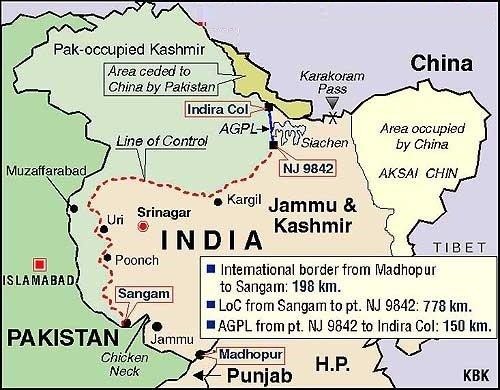Ceasefire Violations along LoC: India-Pakistan Conflict
Ceasefire Violations along LoC: India-Pakistan Conflict
Why in the News ?
Pakistan has violated the ceasefire along the Line of Control (LoC) for over a week, prompting a proportionate Indian response. This is the most significant breakdown of the ceasefire since 2021.
Evolution of the LoC Ceasefire:
- The India-Pakistan ceasefire began after the 1971 war with the Karachi Agreement (1949), redefined as the Line of Control (LoC) post Simla Agreement (1972).
- The LoC is not an internationally recognized border but serves as a military holding line.
- Over time, the LoC has become prone to violations, especially with the rise of cross-border firing and terrorist infiltration since 1989.
Nature of Ceasefire Violations
- Ceasefire violations increase during times of crisis, including small arms fire and artillery shelling.
- Factors like local military dynamics, testing resolve, and moral ascendancy contribute to such violations.
- Autonomous military actions occur independently of political developments, testing military units or establishing dominance.
Current Crisis and Response
- Pakistan’s violations began after the terrorist attack in Pahalgam, India, leading to Indian military retaliation.
- Both countries have hotlines for communication and flag meetings to manage tensions, but violations persist due to local commander actions and military pressures.
- The ceasefire understanding serves as a buffer, although cross-border firing remains a strategic tool for both sides, increasing risks of escalation.
About the Line of Control (LoC):●Definition: The LoC is the de facto military boundary between India and Pakistan in Jammu & Kashmir and Ladakh. It is not an internationally recognized border but a ceasefire line under the Simla Agreement. ●Historical Background: ● Region and Spread: ● Key Features: |





